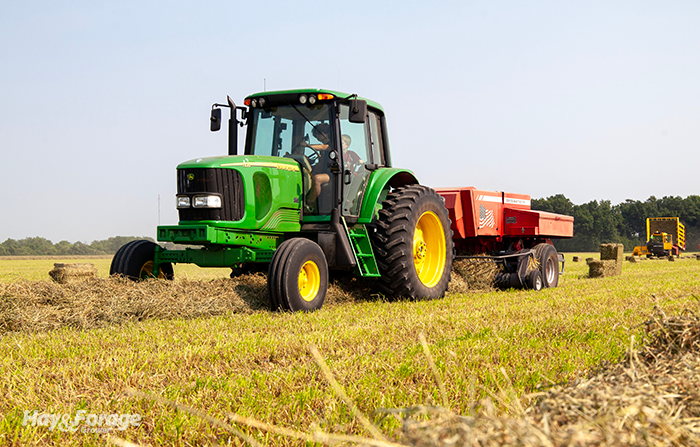
Although hay harvest schedules vary by region, many farmers in the Midwest are likely in the midst of second cutting, if they haven’t completed it already. Timing this next cutting — and every cutting to follow — requires a balance between monitoring stand maturity and watching the weather forecast.
Keeping an eye on the calendar to time forage harvest is likely the least effective strategy to secure a quality crop. Other strategies that take growing degree days into account or use predictive equations of alfalfa quality (PEAQ) are more accurate ways to determine the best time to cut. Of course, nothing beats getting boots on the ground and monitoring alfalfa’s growth stage in the field.
Even when these estimates and observations confirm alfalfa is ready to harvest, though, field conditions might not be suitable to do so. It can be frustrating to watch alfalfa grow past optimum yield and quality because Mother Nature doesn’t offer a wide enough window to cut it, dry it, and bale it on time.
In a recent article from Ohio State University Extension, Christine Gelley reports that farmers across the Buckeye State have been struggling to make hay so far this summer without a sufficient stretch of suitable weather. The same can be said for hay producers from other regions, whether they are experiencing dry growing conditions or rainy days and pop-up showers dominate the forecast.
“From extreme drought to excessive rain, we’ve been on a pendulum swing of weather conditions that seem to be working against the process of making high-quality hay,” Gelley, an agriculture and natural resources extension educator, writes.
Despite this, she encourages farmers to be proactive and stay ahead of other fieldwork and farm tasks so that all systems are go to make high-quality hay when the sun does shine.
“While we can’t control the weather, there are many things we can influence when it comes time to put up hay,” Gelley writes. “Many of these factors have to do with maintenance of the land, our machinery, and our time.” Some of these include:
• Keeping up with routine soil testing, tracking hay removal rates, and making recommended fertilizer and/or lime applications.
• Selecting and seeding improved forage varieties.
• Monitoring weeds and taking an integrated approach to control them at proper times during the growing season.
• Performing routine inspections and maintenance on machinery, especially before using it in the field.
• Ordering spare parts that you anticipate will be needed throughout the harvest season.
• Preparing a storage site for hay, preferably one that will allow bales to be under a roof or wrapped until feedout.
• Conversely, finding buyers that can pick up bales from the field to avoid the need to store hay.
• Communicating in advance with on-call help that can be available to assist when weather conditions allow for fieldwork.
• Preparing a back-up plan to work around other commitments in order to maintain a flexible schedule during the hay season.
Gelley adds being a good neighbor and being available to help fellow farmers as the final item on her list. “So, when the time comes that you need help, you have someone close to call if you get into a sticky situation,” she says.

